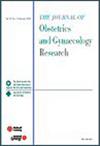Clinical characteristics and survival outcome of vulvar cancer in South Korea: A nationwide study from the Cancer Public Library Database
Abstract
Objective
Vulvar cancer, although rare, presents clinical challenges due to diverse histological subtypes and varying prognoses. This study aimed to examine the clinical characteristics and survival outcomes of vulvar cancer in South Korea.
Methods
A retrospective cohort study was conducted using data from the Cancer Public Library Database, which includes information from the Korea National Cancer Incidence Database, Statistics Korea, and National Health Insurance databases. The study analyzed data from South Korean women diagnosed with vulvar cancer between 2014 and 2016.
Results
Out of 1242 initial patients, 292 met the inclusion criteria. The untreated group (n = 62) had a higher proportion of patients aged 80 and above (35.5%) and a higher mean Charlson Comorbidity Index (CCI) score compared to the treatment group (n = 230). The treatment group showed significantly higher survival probability (adjusted HR 0.358, 95% CI: 0.24–0.54) compared to the untreated group. Surgical intervention alone reduced mortality risk significantly (adjusted HR 0.20, 95% CI: 0.12–0.33), particularly among those diagnosed at an earlier clinical stage. Histologically, basal cell carcinoma had the highest survival probability with a significantly lower mortality risk than squamous cell carcinoma (adjusted HR 0.11, 95% CI: 0.02–0.82). Adenocarcinoma also showed improved survival outcomes (adjusted HR 0.42, 95% CI: 0.19–0.94).
Conclusion
The study emphasizes the importance of early diagnosis and surgical treatment in improving survival outcomes for vulvar cancer patients. It also highlights the need to consider demographic and clinical factors in treatment planning and calls for region-specific studies to address unique epidemiological patterns.




 求助内容:
求助内容: 应助结果提醒方式:
应助结果提醒方式:


